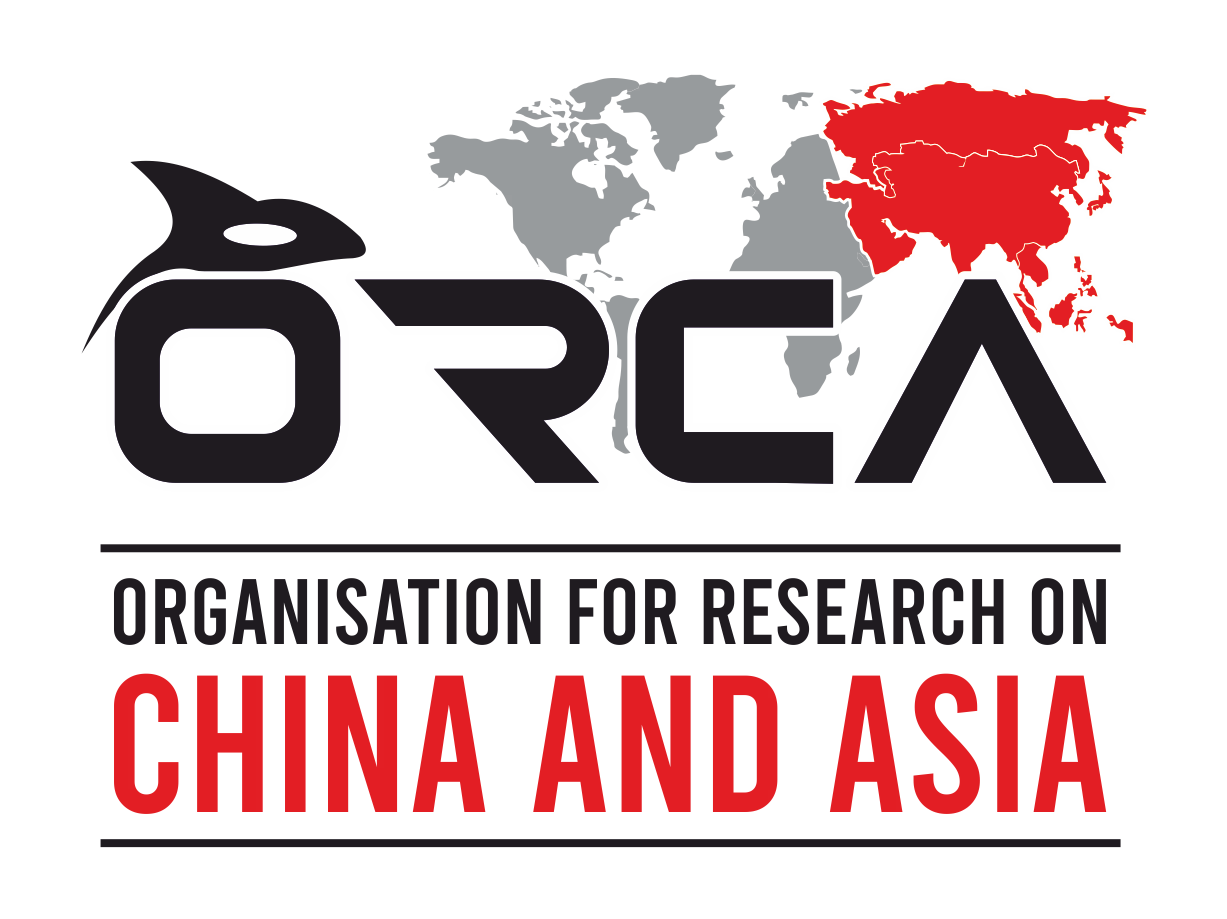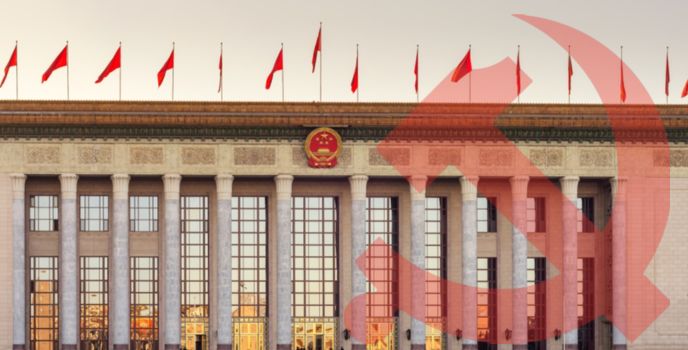China unveiled its institutional reforms plan at the recent National People’s Congress (NPC) annual session, popularly known as ‘Two Sessions’ (两会). These reforms in China’s governance structure, implemented every five years, aim to streamline bureaucratic structure as well as to improve overall administrative efficiency. It also helps to maintain overarching control of the Communist Party of China (CPC) over the State structure. The recent institutional reforms have also continued the pattern of tightening the CPC control over policymaking, which has intensified under Xi Jinping. These reforms include creation of new institutions or ministries to supervise emerging issues, merge two or more departments to achieve efficiency and redistribution of functions among different organizations/ministries for better coordination in policymaking. Thus, trends of these reforms help to understand China’s priorities and potential challenges for the next five years.
History of Institutional Reforms in China
Since the beginning of economic reforms in late 1970s, administrative reforms have also become more frequent to adapt to rapidly changing needs of China and to address important issues in a timely manner. These changes also have an inevitable impact on power dynamics between the CPC and the State structure. During Deng era, the focus of these reforms was to reduce the concentration of power in the hands of one leader and to provide adequate powers to State Council by its separation from the Party which enabled State Council to implement economic reforms effectively. This trend continued to great extent even during the period of Deng’s proteges – Jiang Zemin and Hu Jintao.
However, since Xi assumed power in 2012, CPC organs have reasserted their authority over State Council and its affiliated institutions. As mentioned in the 3rd plenary session of the 19th CPC Central Committee, primary aim of institutional reforms is to comprehensively strengthen CPC leadership over all affairs (“全面加强党对一切工作的领导”). The inclusion of all state officials under CPC’s anti-corruption campaign through the establishment of National Supervisory Commission in 2018 is just one example of the CPC control over state affairs. Continuing this trend, the current round of reforms is mainly focused on strengthening the CPC oversight on China’s priorities like science and technology, financial regulation, data management, rural revitalisation and intellectual property rights.
Priority to Technological Self-Reliance
In the last few years, Xi Jinping has continuously focused on scientific and technological self-reliance, especially amid tightening US export controls on advanced technologies. More than 600 Chinese firms in critical sectors like semiconductors, aviation and AI have been put into the US trade blacklist in the last few years which has barred them from accessing the US technology. Thus, China has revamped the Science and Technology Ministry under the State Council, which was earlier overburdened with several unrelated tasks. Many of the functions of the ministry have now been transferred to other concerned ministries or departments (Figure 1). Thus, the ministry will now be primarily focused on achieving breakthroughs in cutting-edge technologies such as artificial intelligence, semiconductors, and biotechnology.
(Figure 1)
Moreover, a Central Science and Technology Commission will be established under the Central Committee of the CPC to formulate policies for China’s science and technology development. The ministry will be downgraded as merely the executive organ of the new commission. The new commission will now manage national laboratories as well as coordinate the development of civil-military technology integration which was earlier under the purview of the ministry. Similarly, three deliberative and coordinating national leading groups under the ministry will also be dissolved to further narrow down the ministry’s scope. Such overhaul has attempted to make the ministry more focused on its primary objective and at the same time, it has also taken away decision-making power of the ministry by subordinating to Party organ.
Broadly speaking, this revamp clearly indicates the significance of technological self-reliance in China’s policymaking which has compelled the CPC to bring this domain under its absolute control. It will help China to tackle “external containment and suppression” in several key technologies where it is dependent on western countries. These efforts are also supplemented by an increase in expenditure on research and development which has increased from 1.91% to 2.55% of GDP during Xi’s term (Figure 2). The decision on the use of these expenses will now be taken by the CPC instead of the ministry.
(Figure 2)
Besides these changes in the ministry, the creation of National Data Bureau (NDB) is another step by China towards addressing emerging technological challenge of data management. This new bureau will work under National Development and Reforms Commission (NDRC) and will be responsible for construction and promotion of data infrastructure and development of digital economy. Several functions of Central Cyberspace Affairs Commission such as promotion of informatization of public services, social governance, construction of smart cities and management of important national information resources have been transferred to NDB. This will enable China to integrate policymaking on digital governance and also help to tackle emerging challenges in this sector more effectively. On the flip side, it will also tighten government’s hold over data which may have serious implications for data privacy and cross-border data flows. Moreover, keeping data management under NDRC instead of a technology-related body has also puzzled many about the objectives of this new bureau. Similarly, the evolving relation between NDB and several local big data bureaus is also something that needs to be observed to get an idea about the motivations behind the establishment of NDB.
Efforts for Financial De-risking
Since Xi Jinping came to power, financial de-risking has been identified as one of the “three tough battles” that China must fight to ensure national security. In the last few years, China has witnessed several signs of financial risks in real estate, banking and MSME sectors. Further, China’s sluggish economic growth owing to the pandemic has aggravated this problem as evident from recent Evergrande crisis and Henan bank crisis. These are just few examples of burgeoning economic risks that have reached up to local levels in China. Similarly, China’s exposure to global markets and its rising economic engagements across the world has also made it susceptible to several economic externalities. For instance, recent fall of Silicon Valley bank and Credit Suisse due to regulatory failure has alarmed China regarding financial sector regulation. With this context, reforms have been introduced in financial sector to centralize decision-making in key economic areas.
A new National Financial Regulatory Administration (NFRA), replacing Financial Stability and Development Committee, will be established to regulate entire financial sector worth over $50 trillion, except capital market. This new commission under the direct control of State Council will supersede China Banking and Insurance Regulatory Commission and will undertake several functions of People’s Bank of China (PBoC) as well as of China Securities Regulatory Commission (CSRC) (Figure 3). Thus, it will help to reduce loopholes previously created by multiple financial regulatory bodies. Moreover, a new Central Financial Work Committee will be established as a CPC organ to oversee financial sector of China. Whether it will subordinate NFRA or run parallelly is something to be seen in coming years.
(Figure 3)
Further, CSRC is also elevated from a public institution to a government agency directly under State Council, which will provide more powers to effectively manage China’s capital market. Moreover, CSRC is also entrusted to supervise and review corporate bond issuance which was previously under the purview of the NDRC. This decision has been implemented keeping in mind China’s overdependence on the US treasury bonds. China’s investments in these bonds have continuously decreased in the last year due to declining yields and fears of financial sanctions from the US. Thus, China’s corporate bonds can play a major role in re-orienting this freed-up capital, where CSRC will be better equipped to regulate these flows in China’s domestic market.
Similarly, new reforms also provide for abolition of 11 regional branches of PBoC as well as county level branches and establishment of new provincial-level branches in all capital cities along with special branches in 5 key cities of Eastern China. These changes, coupled with transfer of several responsibilities to NFRA, will help PBoC to focus on effective implementation of monetary policy and its faster transmission through its provincial branches. Thus, changes in China’s financial sector regulations are seem to be driven by China’s dire need to avoid any financial crisis at least in the next few years as its risk absorption capacity has reduced owing to sluggish growth and global headwinds.
Conclusion
| Concerned Ministry/Institution | Reforms | Likely Reason |
| Hong Kong and Macau Affairs Office | Brought under the CPC instead of State Council | Instability created by protests over 2019 National Security law In Hong Kong and economic significance of two cities |
| State Intellectual Property Office | Transferred from a national bureau under State Administration for Market Regulations to an institution directly under State Council | Establish stronger hold of State Council over intellectual property regime in China, especially on background of technological self-reliance efforts |
| National Public Complaints and Proposals Administration | Elevated to an institution under State Council from a national bureau of General Office of State Council | Better connection between people and government and faster redressal of citizens grievances |
| National Working Committee on Aging | Transferred from National Health Commission to Ministry of Civil Affairs | Tackle challenges of aging population in accordance with other population policies |
| Ministry of Agriculture and Rural Affairs | Absorbed National Rural Revitalisation Bureau | Integrate efforts for rural revitalisation and building strong agricultural base |
(Figure 4)
The proposed institutional reforms are introduced to address challenges and priorities for China. These reforms itself do not guarantee that China will be able to successfully tackle challenges in different sectors. However, coupled with new appointments of Xi’s confidantes, it ensures that Xi Jinping and the CPC remains the core decision making body for these sectors. On the other hand, reorganization of ministries/institutions will facilitate efficient policymaking at the central level. Although reforms in critical sectors along with other changes (Figure 4) are not as comprehensive as the 2018 reforms, it still demonstrates that the role of State structure in decision-making has been declining gradually. One of the major implications of these changing dynamics between the Party and the State is that decision-making process will be more ideology-driven than before. These changes in China’s domestic politics are also likely to create some ripple effects globally, especially in technology and financial sector. What these effects will be and how the world reacts to it remains to be seen in the coming years.



Author
Omkar Bhole
Omkar Bhole is a Senior Research Associate at the Organisation for Research on China and Asia (ORCA). He has studied Chinese language up to HSK4 and completed Masters in China Studies from Somaiya University, Mumbai. He has previously worked as a Chinese language instructor in Mumbai and Pune. His research interests are India’s neighbourhood policy, China’s foreign policy in South Asia, economic transformation and current dynamics of Chinese economy and its domestic politics. He was previously associated with the Institute of Chinese Studies (ICS) and What China Reads. He has also presented papers at several conferences on China. Omkar is currently working on understanding China’s Digital Yuan initiative and its implications for the South Asian region including India. He can be reached at [email protected] and @bhole_omkar on Twitter.